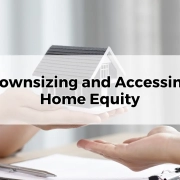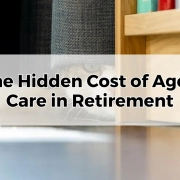What Happens Financially if You Return Home from Aged Care
Table of Contents
ToggleNot all transitions into residential aged care are permanent. Whether due to improved health, a change in personal circumstances, or dissatisfaction with aged care arrangements, returning home is a reality for some individuals. However, this shift prompts a cascade of financial considerations. Understanding the intricacies of fees, government entitlements, and property management is essential to avoid unwelcome surprises and to secure financial stability during and after the move home.
Residential Aged Care Agreements
When entering aged care, residents typically sign an agreement that outlines the cost of care, the conditions of the arrangement, and the terms of departure. These agreements often contain clauses relevant to early exits. Upon return home, it’s critical to revisit these terms to understand any exit obligations, including notice periods, termination fees, or accommodation refund provisions. Clear comprehension of these legal and financial obligations prevents unintended financial liabilities.
The Refundable Accommodation Deposit (RAD): What Happens Next?
If a Refundable Accommodation Deposit (RAD) was paid upon entry into care, returning home generally triggers its repayment. However, the process is not instantaneous. Providers are allowed up to 14 days after departure or 14 days after receiving probate (whichever is later in the case of a deceased resident) to return the RAD. If the return home is voluntary and the resident is still alive, RAD repayment timelines hinge on formal discharge notice and the provider’s administrative cycle. Ensuring all care fees are paid up to date can prevent delays.
Reassessing Daily Fees and Means-Tested Care Contributions
Once a resident exits care, their obligation to pay the basic daily care fee and any means-tested care fee ceases from the day of formal discharge. However, overpayments can sometimes occur, especially where notice periods are not clearly communicated. It’s essential to liaise with the provider’s accounts department to reconcile final invoices and confirm accurate fee termination dates. The government’s contribution to care also stops, meaning that entitlements must be re-evaluated promptly.
Centrelink and Aged Care Means Assessments Post-Exit
Returning home significantly alters one’s financial assessment with Centrelink. The aged care means test, which influences aged care fees, becomes obsolete, and the resident’s eligibility for pensions or income support may be recalibrated. Income and asset declarations must be updated to reflect the return home. This may also impact Rent Assistance eligibility, depending on whether the home is rented, owned, or mortgaged. Prompt communication with Services Australia ensures continuity of benefits.
Home Ownership and the Former Home Exemption
While in aged care, the former home may be exempt from the asset test for a limited time if a spouse or protected person remains in it. Upon returning home, this exemption becomes irrelevant, and the property becomes the primary place of residence once more. This affects how Centrelink assesses assets, potentially improving age pension entitlements if the RAD is refunded and invested or used to clear debts. It’s vital to reallocate funds judiciously to optimise entitlements.
Reopening Utility Accounts and Reinstating Household Expenses
Living in residential care often means pausing or cancelling household services. Upon return home, utilities such as electricity, gas, internet, and water must be reactivated, often incurring re-connection fees or new contract negotiations. It’s also necessary to re-engage with service providers for insurance, home maintenance, and general living expenses. A thorough review of the home’s readiness for occupancy is both a logistical and financial priority, requiring immediate attention.
Accessing Home Care Packages Instead
Instead of residential care, many returnees explore in-home support through the Home Care Packages (HCP) program. Accessing a package requires a new Aged Care Assessment (ACAT), and package availability is subject to national waitlists. Depending on the individual’s means, an income-tested fee may apply, though it’s generally less than residential care fees. Transitioning from residential care to home care requires meticulous planning to ensure continuity of care and funding.
Updating Wills, Enduring Powers, and Advance Care Directives
A return home is a major life event and an opportune time to review legal and estate documents. Circumstances will have changed since the initial move into aged care, particularly in regard to property ownership, financial assets, and personal care preferences. Revisiting wills, enduring powers of attorney, and advance care directives ensures that legal intentions remain aligned with current reality. This also prevents family disputes and administrative confusion down the track.
Adjusting Financial Strategies and Investment Portfolios
The move out of aged care usually results in the return of the RAD and potentially changes in pension entitlements. This influx of capital may warrant a reassessment of financial strategies. It’s prudent to consider diversifying income streams, balancing liquidity with growth, and potentially modifying the risk profile of investments. Guidance from a financial adviser ensures these changes align with broader retirement objectives and cashflow needs.
Insurance Implications: Health, Contents, and Property
Living arrangements influence insurance coverage. Transitioning back into the home means reactivating home and contents insurance and possibly adjusting health insurance cover. Some insurers may require property inspections or impose waiting periods. If the home was unoccupied or rented during the aged care stay, policies may need rewriting. It’s vital to disclose the full history of property usage to avoid claim rejections and ensure appropriate coverage.
Budgeting for the Real Costs of Living Independently Again
One of the starkest financial realities of returning home is the reintroduction of daily living costs—groceries, transport, maintenance, and care services. These costs can escalate quickly, especially without a live-in carer or community support. A comprehensive household budget should be created to avoid cashflow shortfalls. Allow for contingencies such as medical expenses, home modifications, or assistive technologies that support safe independent living.
Emotional Considerations with Financial Consequences
Though often overlooked, the emotional journey of leaving aged care can have significant financial implications. Feelings of isolation, frustration, or anxiety can influence decision-making, leading to impulsive financial choices. It’s important to pair emotional support with sound financial advice. Family members should be engaged, not just as emotional support but as part of the financial planning process. Maintaining transparency helps protect vulnerable individuals from exploitation or poor financial decisions.
Seeking Professional Support to Avoid Financial Pitfalls
Navigating the complexities of a return home from aged care is not a DIY exercise. Professional support—from financial advisers, elder law specialists, aged care placement consultants, and Centrelink liaison officers—ensures each moving part is addressed holistically. Missteps in timing or documentation can trigger losses in entitlements or tax inefficiencies. Coordinated advice empowers individuals to retain dignity, independence, and financial clarity.
Conclusion
Returning home from aged care is a deeply personal decision with profound financial ramifications. Every component—Centrelink, aged care fees, housing status, home care access, and estate planning—interacts in a delicate web of obligations and entitlements. With methodical planning and professional guidance, the financial transition can be managed prudently. Ultimately, the goal is not just to come home—but to thrive there.









